hanafuda
The Rules of Hanafuda: Everything You Need to Know!

Devon Lord-Moncrief
Posted on August 15, 2025
Share:
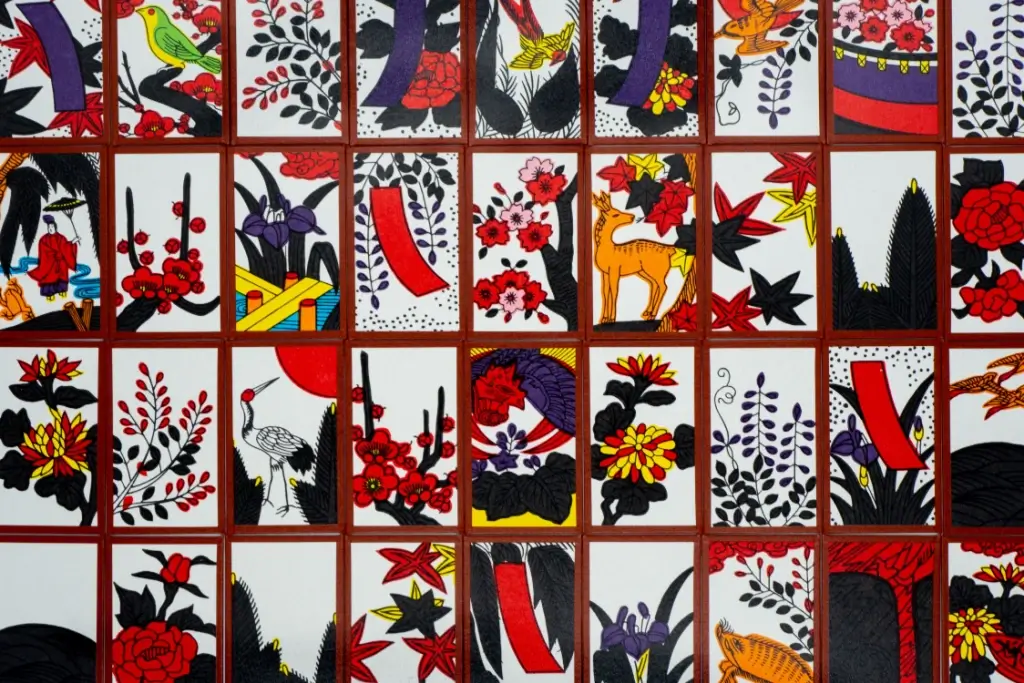
One of the oldest and most popular card games in Japan is hanafuda. People still play it today. Hanafuda is a matching game featuring cards with beautiful artwork. Today, we’ll explore this classic game. It is for anyone who has never heard of the game and those who want to play.
A Brief History of Playing Cards In Japan
Japan has a deep history with playing cards. This makes sense because trading card games like Pokémon and Yu-Gi-Oh are popular today. The Portuguese introduced playable decks of cards to Japan in the mid-1500s. At that time, using decks of cards was a new and foreign idea. Over the years, Japan opened and closed its borders to the West. As a result, the government sometimes frowned upon playing cards.
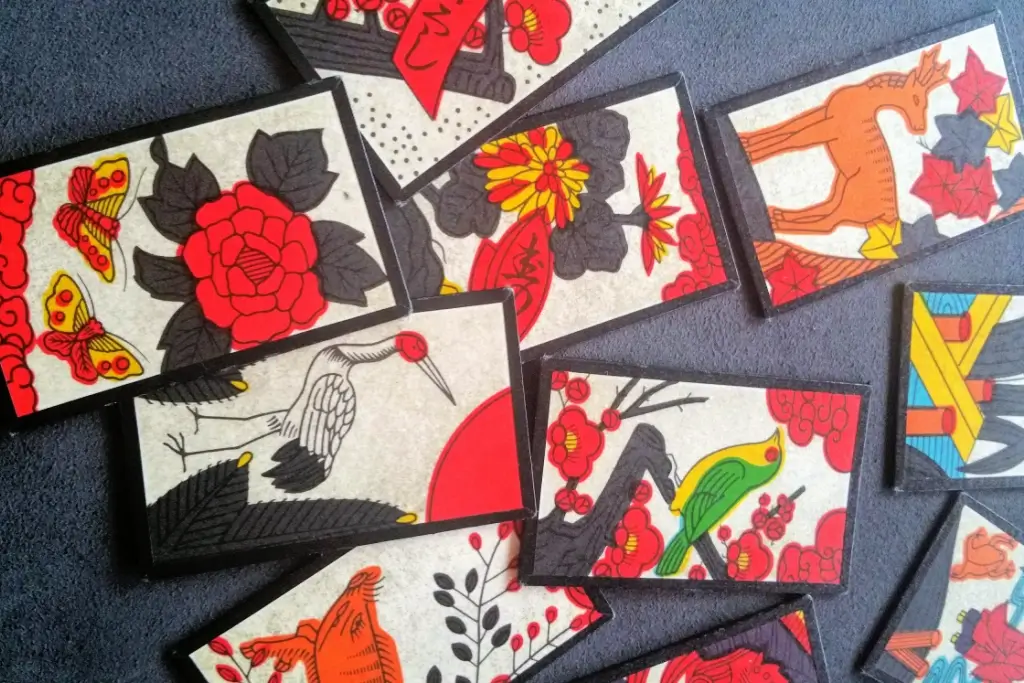
The popularity of playing card games gave way to using them as a means of gambling, which drew even more ire from the government. Over the next few hundred years, card decks would undergo many rules, styles, and name transformations to dodge national bans. Finally, during the Meiji period (1603-1868), the ban on playing cards was lifted, and people could enjoy them without worry.
What is hanafuda?
Hanafuda, or “flower cards”, is a game that consists of forty-eight cards. Traditionally, the cards depict various scenes involving nature, such as animals, flowers, and the sun. There are twelve suits to a deck, each representing a month in the year. Different cards are worth different points. There are variations to the core game, with some including or excluding different joker-style cards as needed.
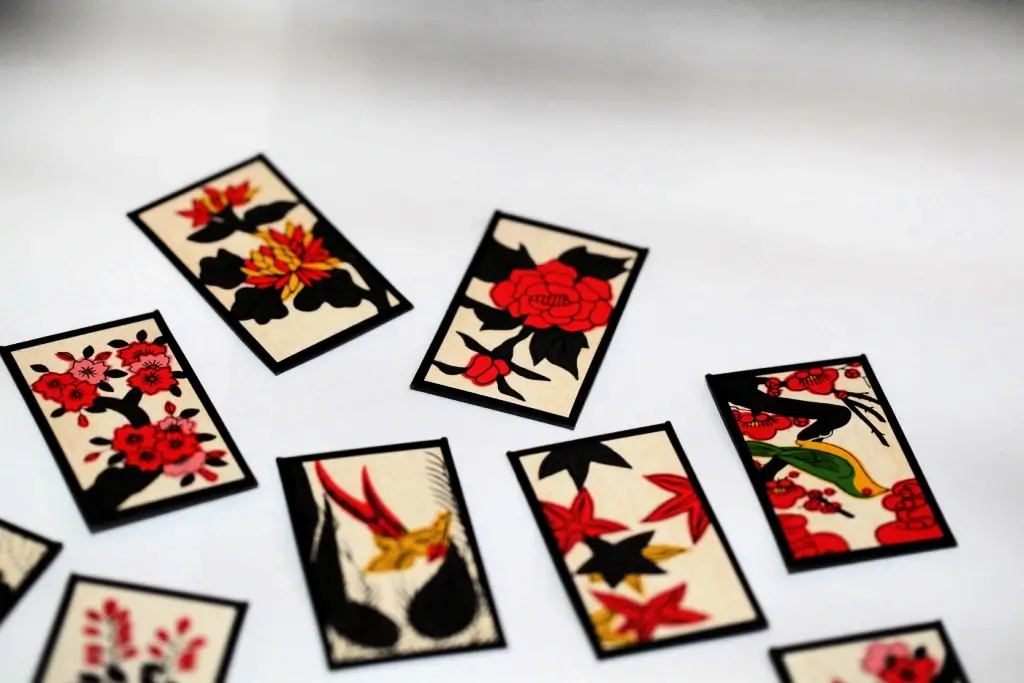
The premise of hanafuda, emphasizing matching beautiful imagery, can be traced back to the ancient game of mono-awase from the Heian period (794-1185). Mono-awase stemmed from a game Japanese aristocrats would play with one another, involving two people comparing objects of great beauty, such as shells, fans, and paintings.
There were generally two teams, one in purple or orange and the other in blue or yellow. A judge would preside over the game and decide which presented object was more beautiful. While mono-awase was essentially a game of linguistics and wits, as players would often speak in poems to describe their objects, the game would become the core principle for hanafuda many years later.
What are the basic rules of hanafuda?
The most common and popular way to play hanafuda is to play “koi-koi” or “come on, come on!”, a game where two players work to create sets of matching cards. The game is straightforward and can be broken down into these steps. It’s important to remember that there are many variations to the rules for koi-koi, so these are the most general for newcomers to the game.
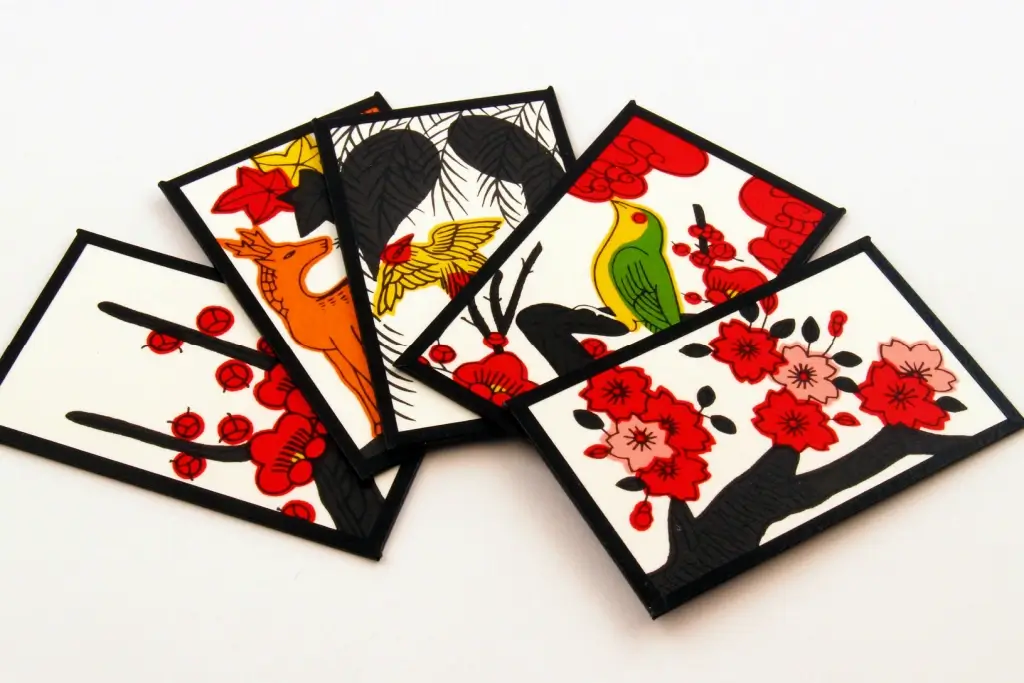
Setting up the Game
1. Choose a Dealer: This can be done via rock-paper-scissors, rolling dice, or drawing the deck’s top card and getting the earliest month.
2. Deal the Cards: The dealer then shuffles the deck and deals eight face-down cards to their opponent, eight face-down for themselves, and then eight face-up between them in two rows of four (this is called the field.) The rest of the cards are set aside as the draw deck.
3. Check for Sets: If four cards of a month are dealt to the field, the cards are scooped and reshuffled. If three out of four cards of a set are on the field, they’re put into a single stack for a player to score.
4. Check Hands For Instant Win Conditions: If either player has a complete set of four cards in their opening hand, or four pairs of two cards in their opening hands, they get an automatic six points, and the cards are reshuffled. If both players have these conditions, the round is a draw.
Are you looking for great snacks while playing traditional games? Check out Sakuraco! Sakuraco delivers traditional Japanese snacks, teas, and sweets from local Japanese makers directly to your door so you can enjoy the latest treats directly from Japan!
Playing the Game
5. Playing the Actual Game: Once the cards are dealt and hands are checked, the game proceeds as follows:
a. Beginning the Game: The dealer will take one card from their hand and place it on the field. If it matches a card in the field, they will place it on top; otherwise, it stays on the field.
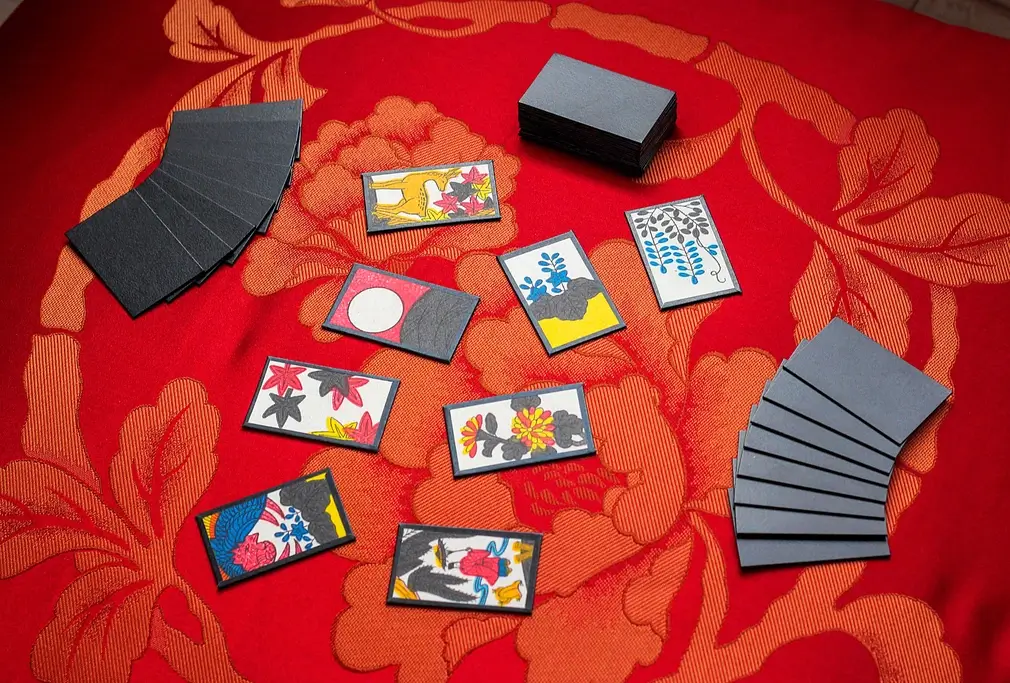
b. The Opponents Turn: The next player draws a card from the deck and places it on the field. If it matches a card on the field, they place it on top; otherwise, it stays on the field.
c. Capturing Cards: If any matches are made during these first two steps, the respective player will take those cards and place them face-up to the side of the play area.
d. Checking for Full Sets: If a complete set was made during the previous actions, players will score them and earn points. If no sets were made, the turn ends and a new one begins, starting over. If a set is made, the next step occurs.
How to Win
e. Calling “Koi-Koi” or “Shobu”: If a player has made a set, they can call “Shobu!” or “Game!” and instantly end the round. But, if they feel lucky, they can call “koi-koi!” or “come on, come on!” to earn more points. Calling koi-koi effectively resets the round, as play begins anew from step a, but the next player who makes a yaku, or complete set, earns double the points. The risk is that a player’s opponent can earn double points and then call Shobu before the first player can make their move.
6. Scoring: When cards are played and rounds end, players score points based on their matches. The player who calls Game gets their points. Their opponents earn nothing, no matter how many matches they made. This rule makes hanafuda a high-risk, high-reward game. Players can choose to score small points quickly or try for big totals. There are koi-koi multipliers, which let players earn even more points. Getting at least seven points in a round through multipliers adds a lot of strategy to the game.
7. Ending the Game : Once twelve rounds have concluded, the game is over, and players compare total point values. The player with the most points wins!
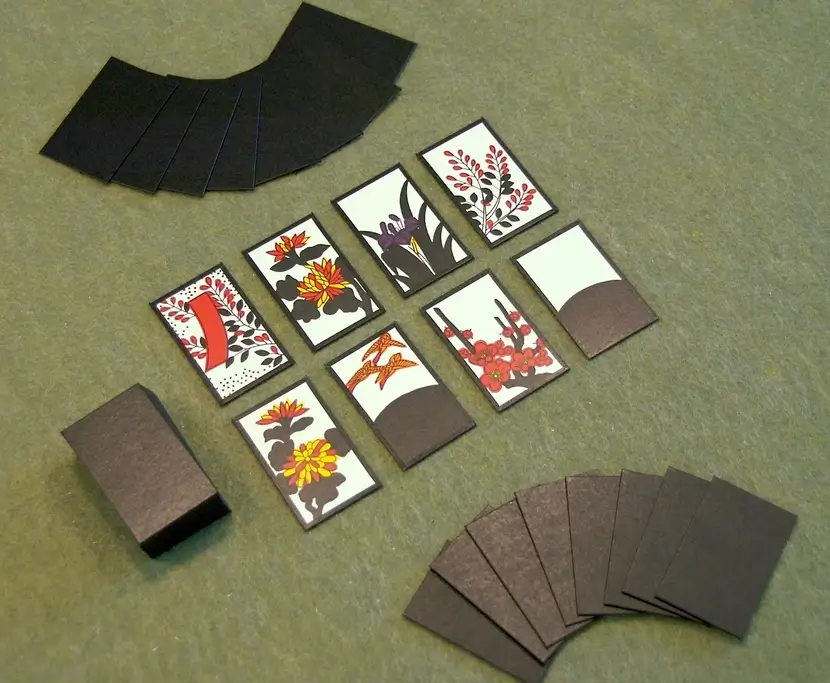
Where can you play hanafuda today?
Many companies make traditional hanafuda decks today, with one particular video game company being the most famous. Nintendo, of Mario and Zelda fame, began in 1889 as a card company, and despite their pivot to video games during the 80s, they still makes traditional card decks.
The game may seem complicated or overwhelming for new players, but it all becomes very easy to understand after a few games. A sheet to aid in sets and point values is also super handy. Have you ever played hanafuda before? Please let us know in the comments below! We’d love to hear about your best game!
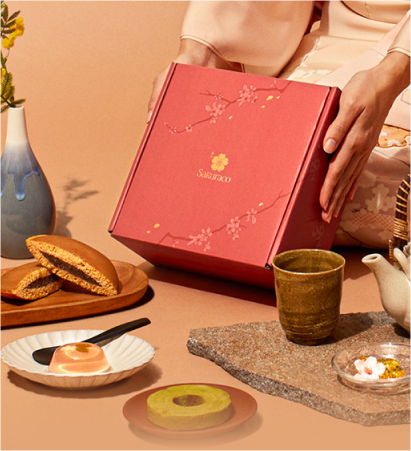
Discover authentic flavors with Sakuraco
Get Sakuraco 

Discover authentic flavors with Sakuraco
Get Sakuraco 
Related Articles
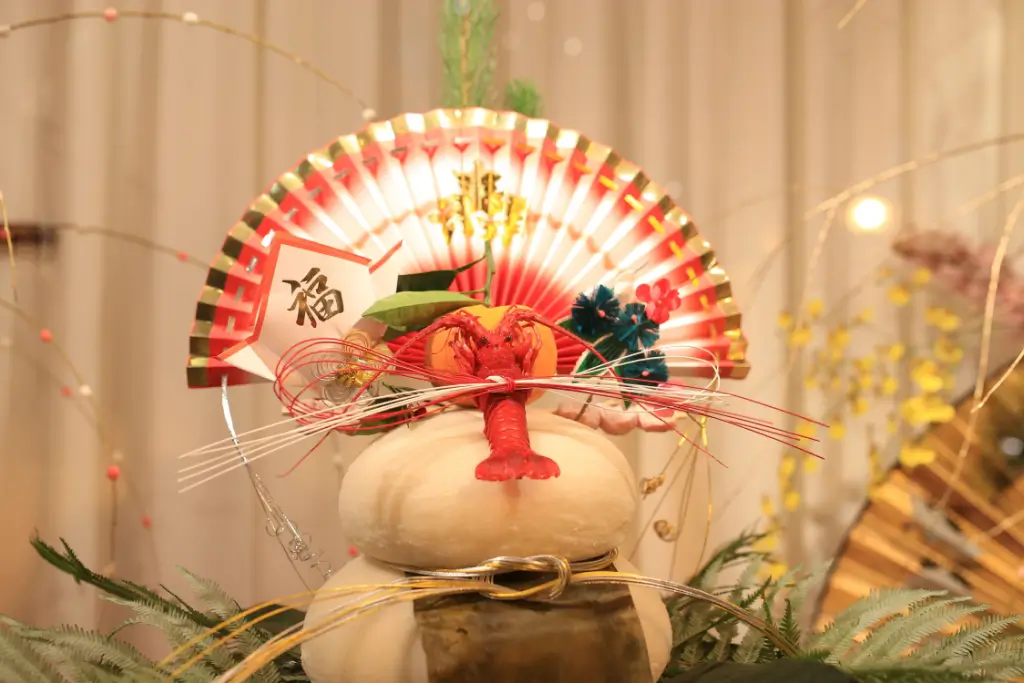
Toshigami and the New Year: How Shinto Welcomes a Sacred Visitor
In the Shinto tradition, Toshigami is the deity who arrives at the end of every year and remains through the New Year to bring blessings, a bountiful harvest, and good fortune. People in Japan honor Toshigami at the turn of the year with rituals, decorations, and special foods.

Japan in Winter: Why Are Illuminations Important?
Winter illuminations have become a tradition in Japan at the start of every Christmas season. Their sparkling brilliance chases away the cold of Japan in winter and encourages people to enjoy festive year-end activities. Let’s explore the origins and the amazing spots of winter illuminations in this beautiful country!

Behind the Camera with Rachel and Jun: Stories from Everyday Life in Japan
We had a lovely chat with Rachel and Jun about their story, from their early beginnings to how their videos continue to inspire people around the world. We’ve gathered and crafted their reflections into this special feature, so you can experience their story in a way that feels just like their videos: warm, genuine, and…
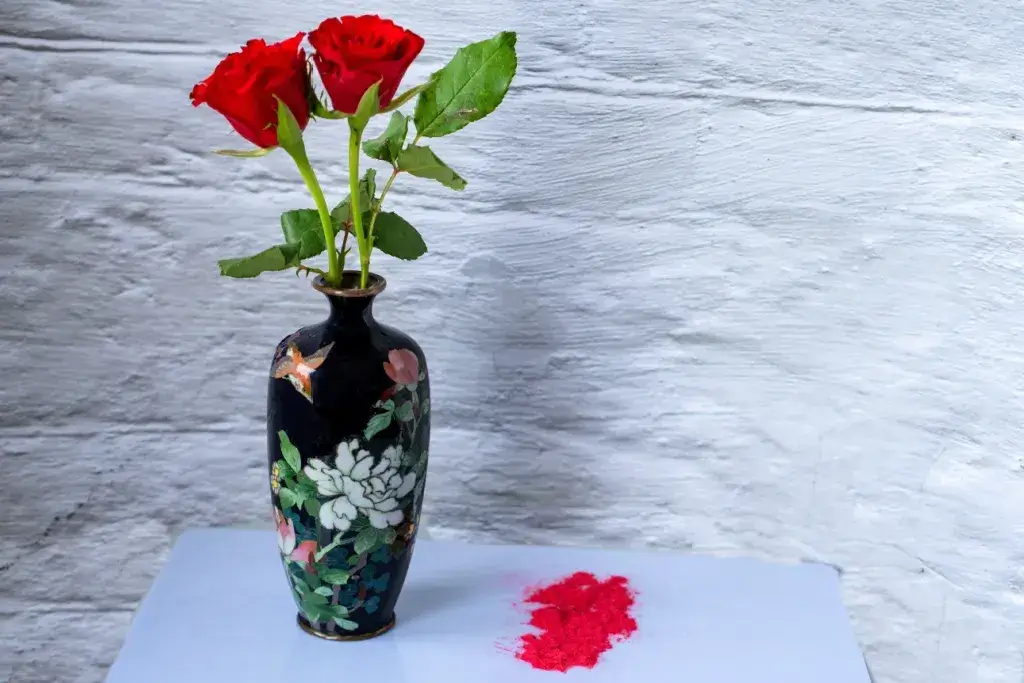
Japanese Ceramics: The Alluring Wares of Shippo Yaki
Imagine holding a small dish that glows as if sunlight is trapped inside it. This perfect example of Japanese ceramics resembles glass, with its colors deep and luminous, outlined with threads of silver. That’s the magic of shippo yaki.



